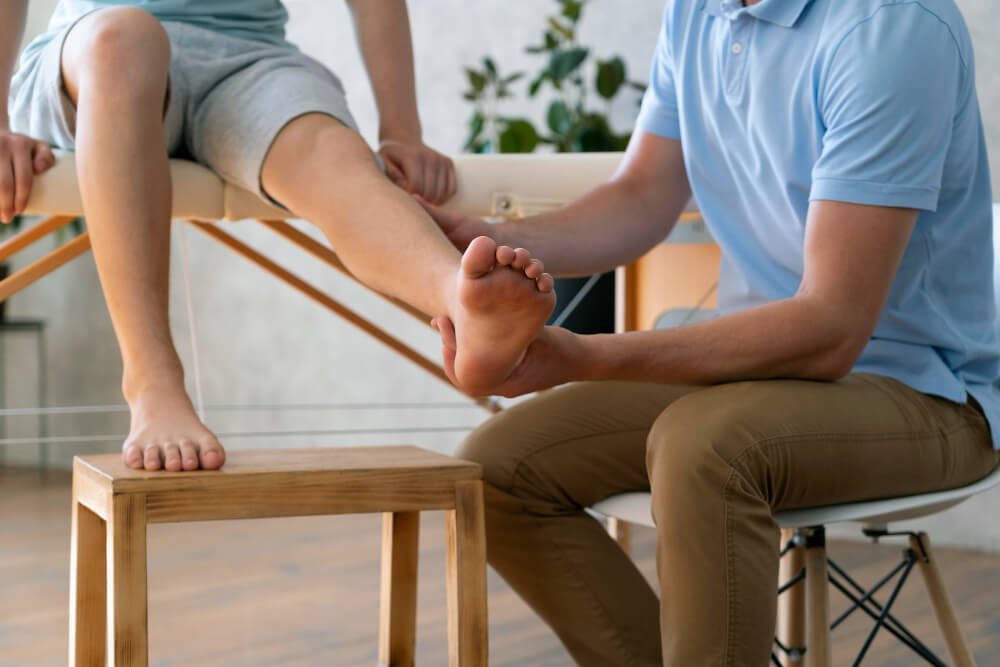Understanding Ankle Ligaments and Recovery from Rolled Ankles: A Comprehensive Guide
A rolled ankle, a common injury, can cause significant pain, swelling, and difficulty walking. But what happens when you roll your ankle? The answer lies in the intricate network of ligaments that support and stabilize your ankle joint. This guide delves into the world of ankle ligaments, exploring their function, how they get injured, and the various treatment options available for a full and speedy recovery.

The Ankle Ligament Team: Unpacking Their Roles
The ankle joint connects your lower leg to your foot and facilitates movement in various directions. Three primary ligaments work together to provide stability and prevent excessive movement:
- Lateral Collateral Ligament (LCL): Located on the outside of your ankle, this ligament prevents outward rolling and supports side-to-side movement.
- Deltoid Ligament: This complex ligament bundle on the inner ankle joint prevents inward rolling and supports various ankle movements.
- Tibiofibular Ligament: Located deeper within the ankle joint, this ligament connects the shin bones and helps maintain joint stability.
The Dreaded Roll: When Ligaments Get Sprained
A rolled ankle occurs when these ligaments stretch beyond their normal limits, causing a sprain. This can happen due to various reasons, including:
- Landing awkwardly: Stepping on uneven terrain, missing a step, or landing poorly during physical activities can all lead to a rolled ankle.
- Sudden changes in direction: Running or pivoting quickly can put stress on the ligaments, especially if proper form is not maintained.
- Muscle weakness: Weak muscles around the ankle can make it less stable and more susceptible to injury.
- Previous ankle injuries: Previous sprains can weaken the ligaments and increase the risk of future injuries.
Grading the Sprain: Understanding Severity
Sprains are classified into three grades based on the severity of the ligament tear:
- Grade 1 (Mild Sprain): Occurs when the ligament is slightly stretched with minimal or no tearing. Symptoms include mild pain, swelling, and tenderness, but walking is usually possible.
- Grade 2 (Moderate Sprain): Involves a partial tear of the ligament, causing moderate pain, swelling, bruising, and difficulty walking.
- Grade 3 (Severe Sprain): Indicates a complete tear of the ligament, leading to significant pain, swelling, bruising, and an inability to walk without assistance.
From Injury to Recovery: Navigating the Treatment Journey

The treatment approach for a rolled ankle depends on the severity of the sprain. Here’s a breakdown of the commonly recommended steps:
Immediate Care (RICE):
- Rest: Avoid putting weight on the injured ankle. Use crutches if necessary.
- Ice: Apply ice packs to the affected area for 15-20 minutes, several times a day, to reduce swelling and pain. Wrap the ice pack in a towel to avoid direct skin contact.
- Compression: Wrap the ankle with an elastic bandage to minimize swelling and provide support.
- Elevation: Keep the injured ankle elevated above the level of your heart to reduce swelling and promote healing.
Additional Treatment Options:
- Over-the-counter pain medication: Medications like ibuprofen or acetaminophen can help manage pain and inflammation.
- Physical therapy: A physical therapist can design a personalized exercise program to improve range of motion, strengthen the muscles around the ankle, and enhance balance and stability.
- Bracing or taping: Wearing an ankle brace or using athletic tape can provide support and stability during the healing process.
- Surgery: In rare cases, severe ligament tears requiring complete reconstruction might require surgery.
Healing Timeline: Expecting the Unexpected
The healing timeline for a rolled ankle varies depending on the severity of the sprain:
- Grade 1 Sprain: Recovery can take 2-3 weeks, with most people regaining full function within a week.
- Grade 2 Sprain: Healing can take 4-6 weeks, with some limitations in movement lasting up to 3 months.
- Grade 3 Sprain: Recovery can take 8 weeks or longer, and physical therapy is often required to regain full function.
Important Note: This timeline is an estimate, and individual healing times may vary. It’s crucial to consult with a healthcare professional for personalized guidance and treatment recommendations.
